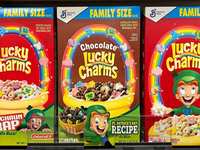- Categories :
- More
The Pattern of Deception

When someone crosses his or her fingers behind his or her back while making a statement, it typically means that what s/he is saying is a half-truth. Unfortunately, this pattern of deception is what we often encounter from large-scale agriculture, food, and pharmaceutical companies, among others. It appears that when public pressure draws attention to a harmful ingredient or chemical, a common practice among big businesses is to attempt to deceive the public through a pattern of deception.
The first response seems cooperative, maybe even concerned. The commitment to remove the ingredient is made. It feels promising to the consumer. The deception occurs when an equally or more toxic substance is formulated to replace it, given a different name, and the public is once again naïve to its consequences.
One notable example is the Millions Against Monsanto movement. Please note that Bayer and Monsanto merged in 2018. Here’s what happened:
- The Millions Against Monsanto movement made Roundup and glyphosate household words.
- Trial lawyers were able to link glyphosate to non-Hodgkin lymphoma, resulting in Bayer paying billions of dollars to more than 175,000 cancer victims. Apparently, however, billions of dollars were not painful enough for Bayer to implement real change. Deception continued.
- Bayer, to reduce their risk of further public pressure and to appear cooperative, promised to remove glyphosate from only certain products that consumers purchase in stores, such as Roundup weed killer at your local home improvement store.
- All the while, glyphosate is still the most-used chemical in agriculture, where farm workers and people who apply herbicides and pesticides have little choice over what they’re exposed to, and the glyphosate still makes it into our food.
- In addition, further deception occurs when the glyphosate removed from Roundup weed killer, for example, is reformulated into an even worse toxin, diquat, which is 200 times more toxic than glyphosate. Diquat is already linked to a cascade of chronic health problems related to the gut damage it causes. That’s what the “new and improved” product at your home improvement store will be – an even more toxic product!
Another good example of this deception has occurred with BPA, or Bisphenol A. BPA is a chemical used in the production of plastics and resins that is known to be an endocrine disruptor, interfering with the body’s hormones, particularly estrogen, and causing increased risks for developmental, reproductive, and neurological issues, as well as cancer. It is found in plastic food and beverage containers, canned products, water bottles, and receipt paper. Now, how many bottles and cans claim to be “BPA free” yet appear the same and function in the same manner? What did they replace BPA with? Most commonly, Bisphenol S (BPS) and Bisphenol F (BPF), which likely pose the same or similar health risks! This means you receive the message “our product is BPA free and therefore safe for you,” while behind the big business façade, their fingers are crossed because they know that is a half-truth. They simply reformulated it into a product that was yet unknown or not understood by the general public and, again, we are deceived.
We are being deceived and need to be savvy consumers who demand a healthier and safer world. Use your lifestyle choices, voice, and wallet to help make America healthy again and insist that these deceptive practices come to an end.
Don’t be deceived. Be savvy and be well.
References:
Organic Consumers Association, newsletter published on July 12, 2025, at 4:07 AM.

















